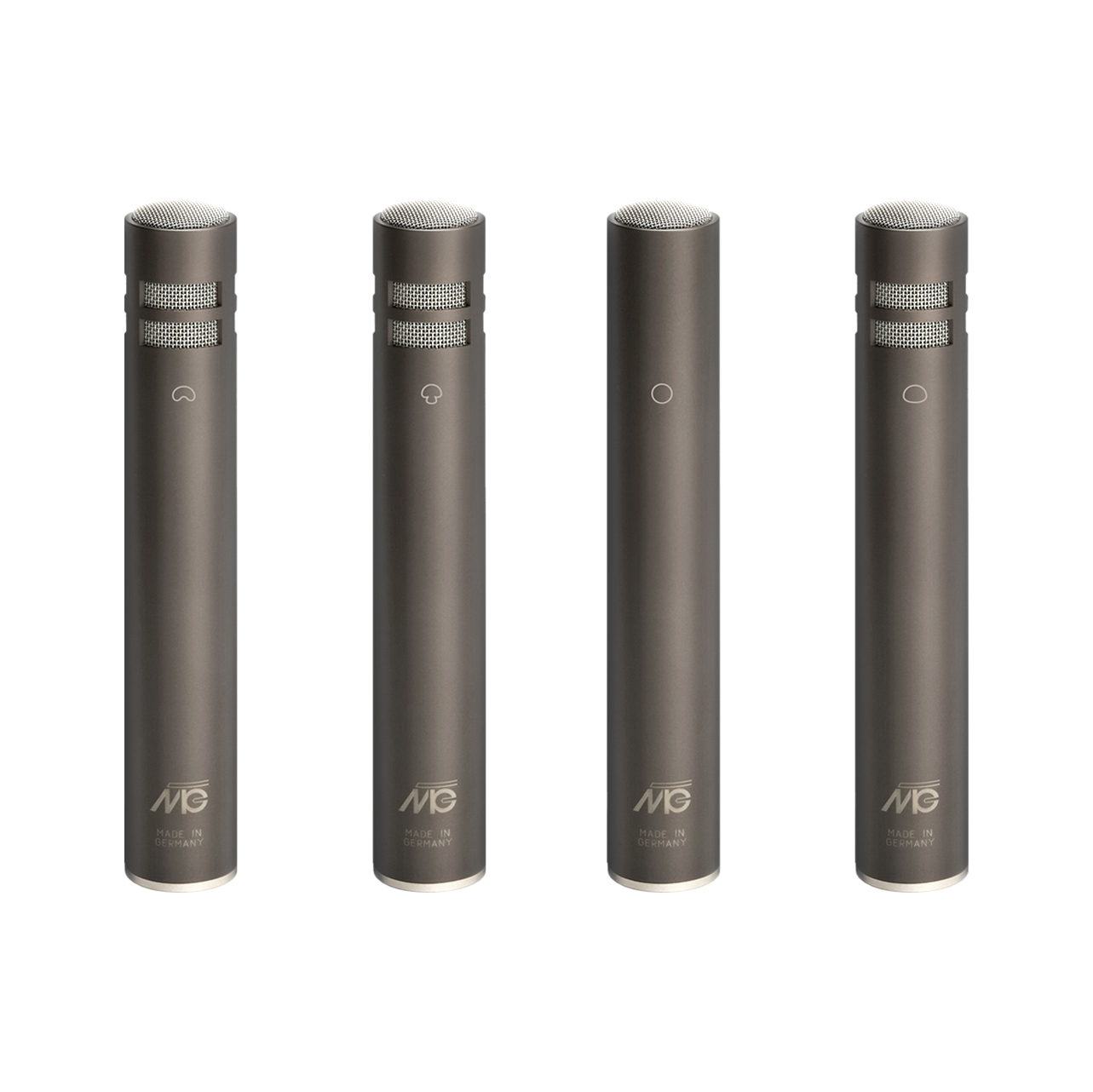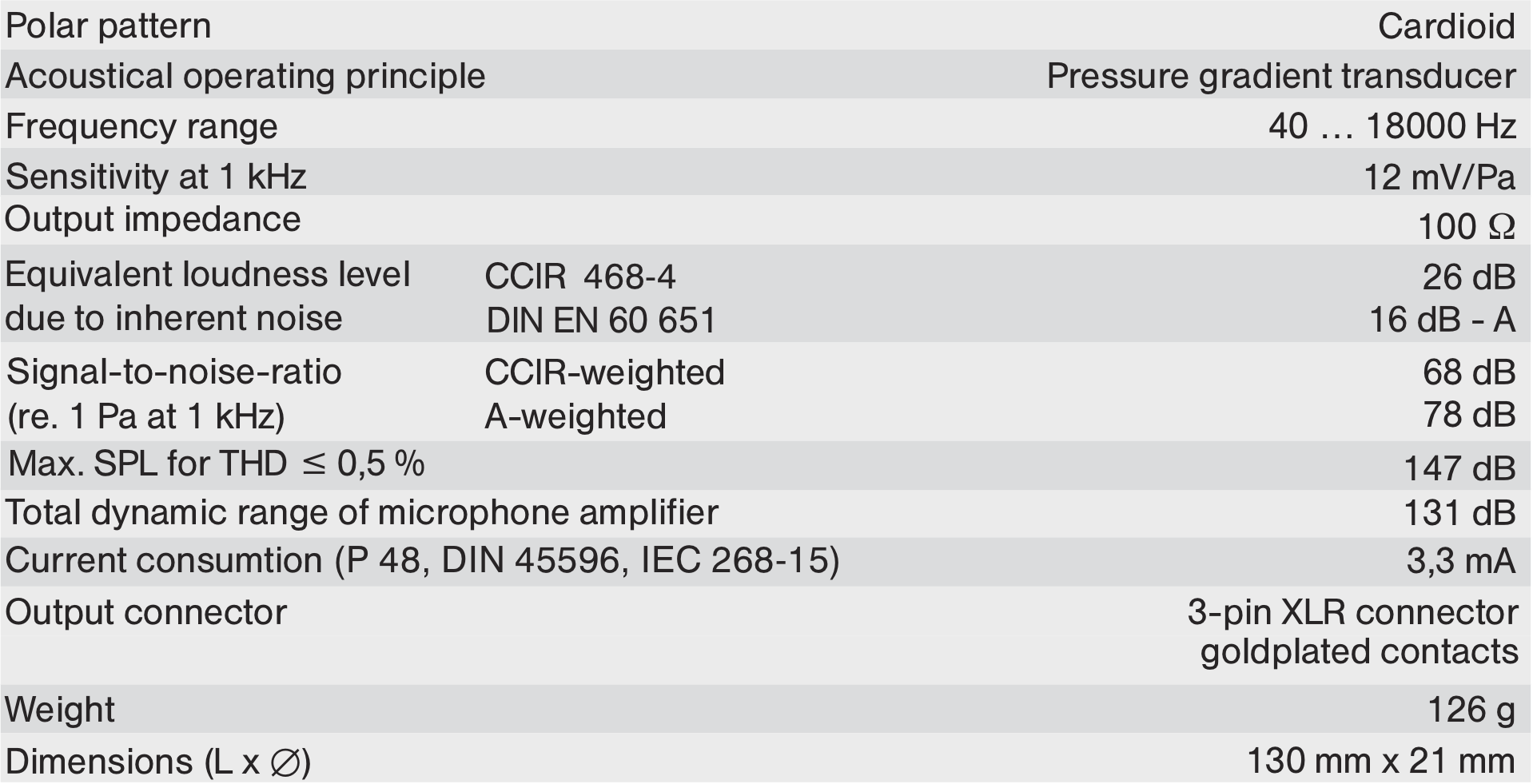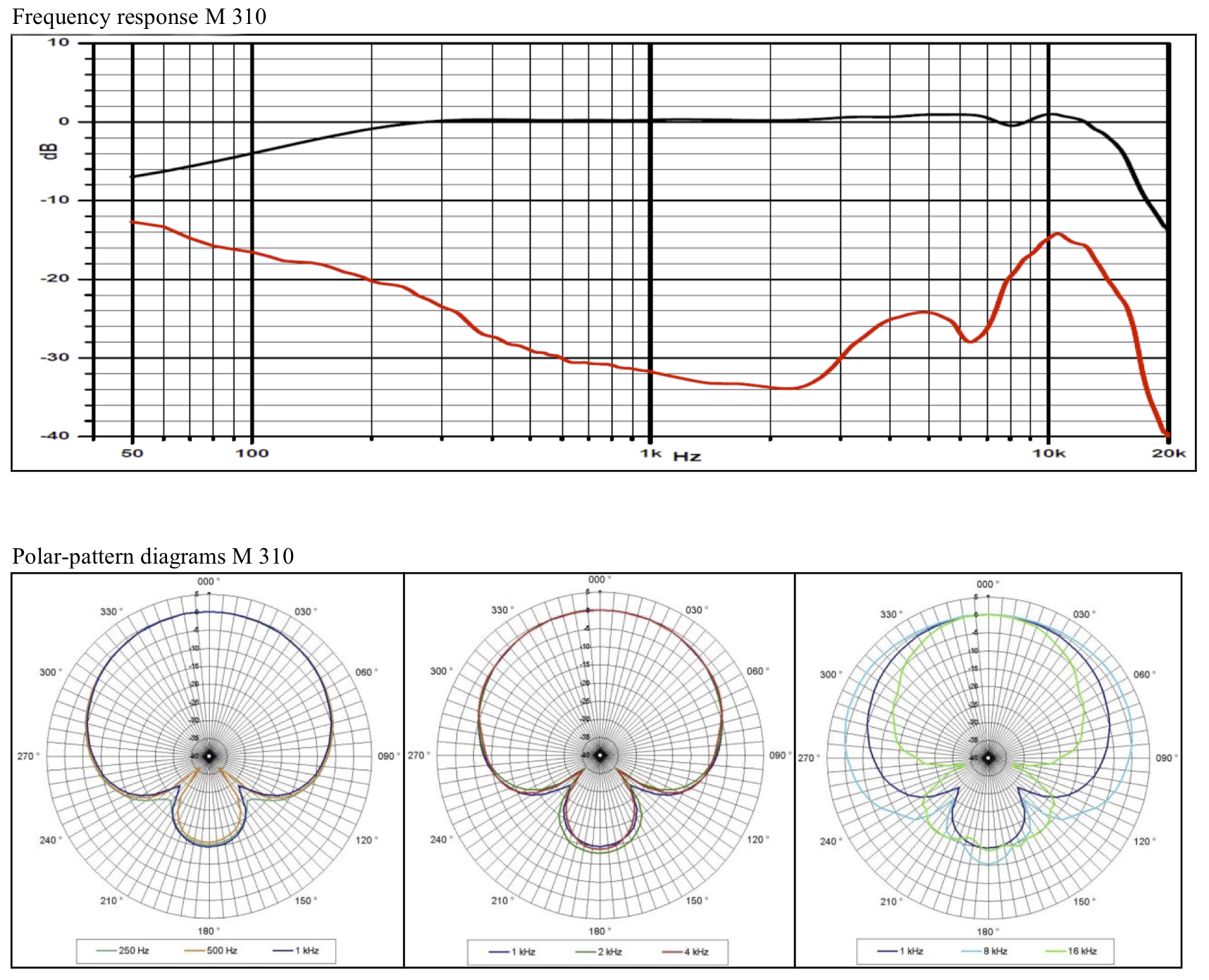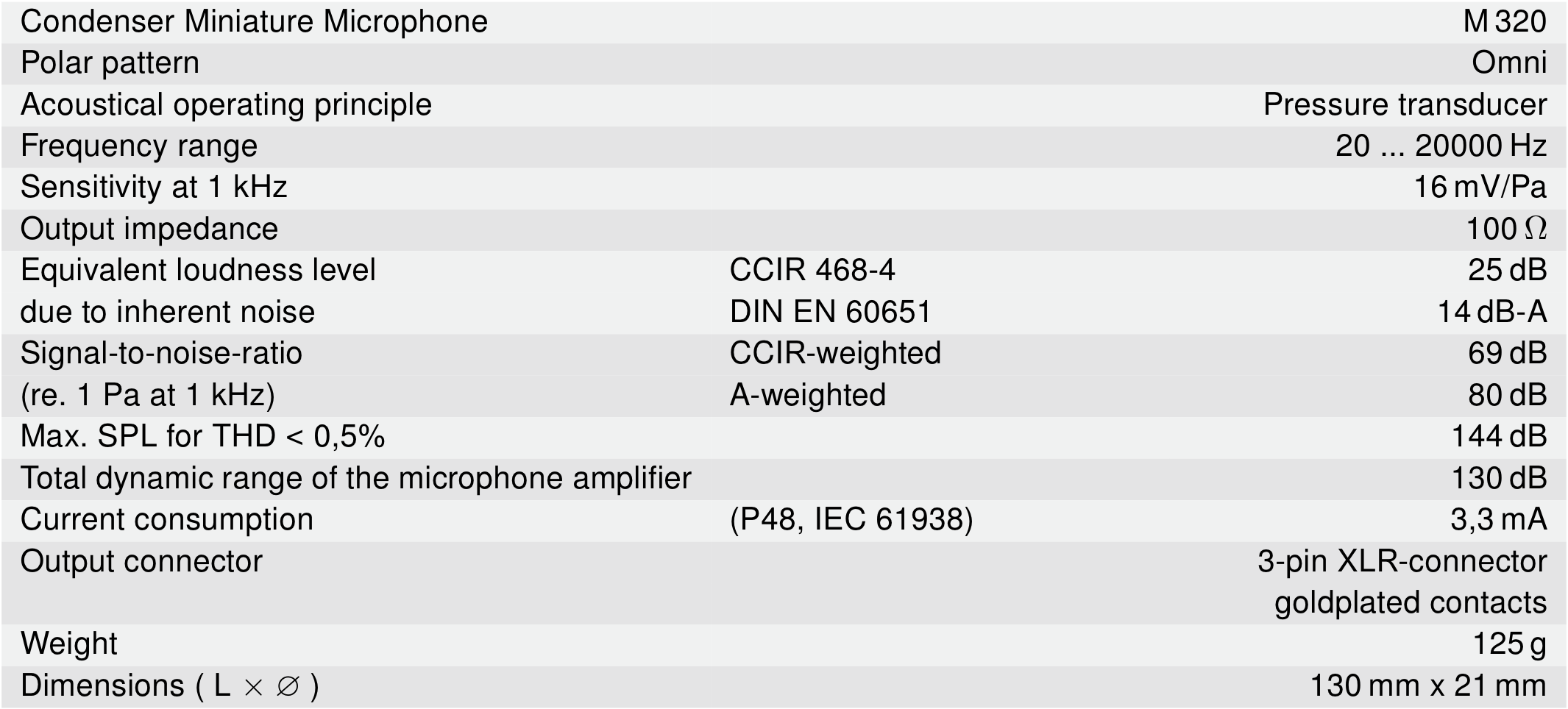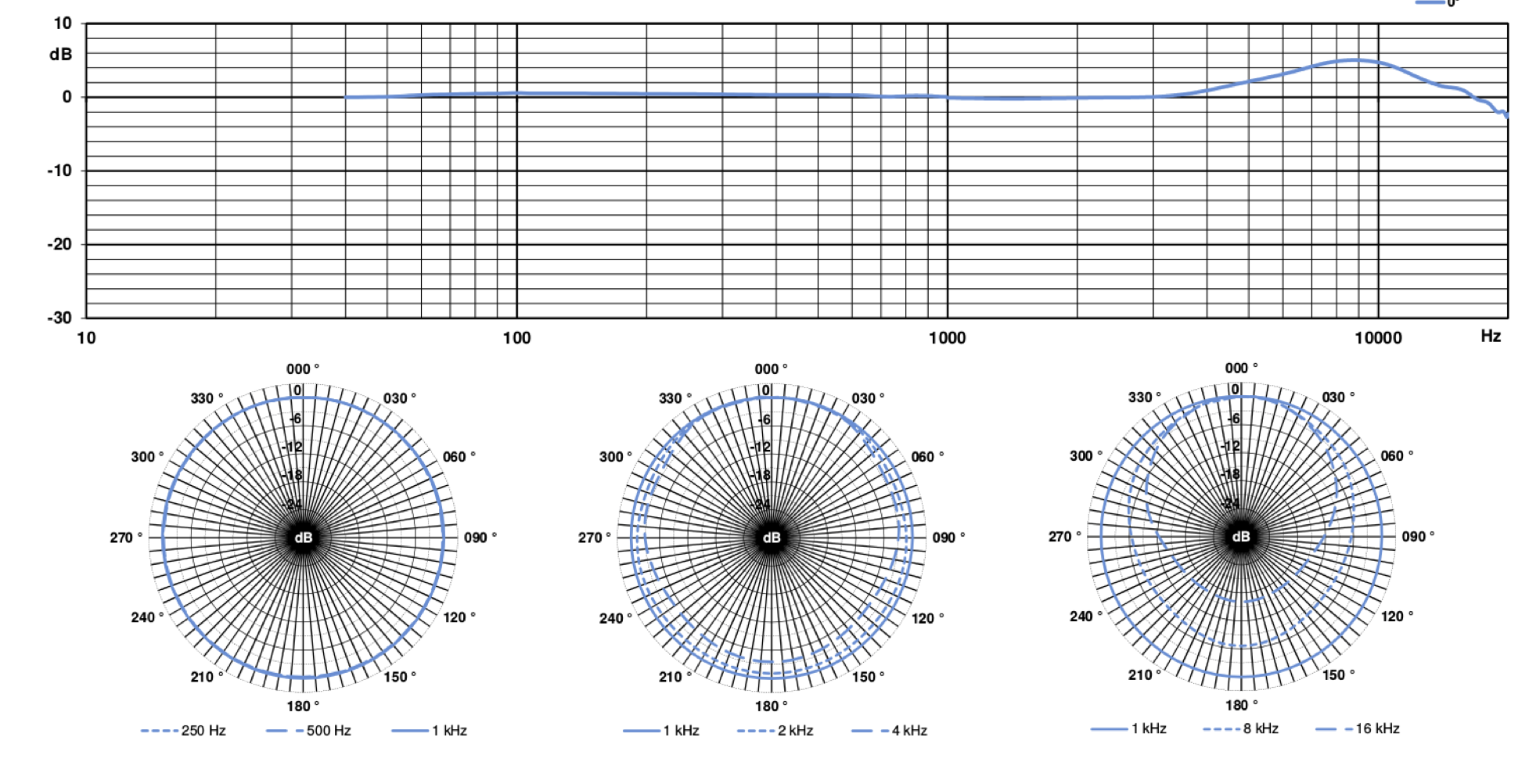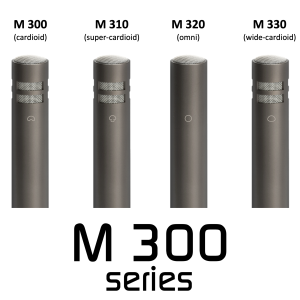

Small diaphragm capacitor microphones with a ceramic capsule
(NB: not M 320)
- M 300 – Cardioid
- M 310 – Super-cardioid
- M 320 – Omni-directional
- M 330 – Wide-cardiod
“If you are in the market for a superlative small-diaphragm
condenser I would strongly recommend adding the M 300
to your short list – and it will be a very short list!”
Hugh Robjohns, Sound On Sound, April 2006
“My main work is recording sound for film and TV and I have a pair of M 310 mics that I use for interior booming. The mic does NOT have any sort of harsh high frequency peak, … it really just sounds correct and has a serious appeal to my ears. If I am listening on a production to sound through other mics and then hear sound through the Gefell mic(s) I just feel like things settled back into the place where they should be and those other mics really just do not sound believable.
One really interesting thing I have found with the M 310 is as the source drifts off-axis, it simply becomes more quiet and the tone does not really shift, which is not typical in a hyper-cardioid mic in my humble experience. This feature of the mic makes it really useful for booming on the fly with talent, because if someone speaks out-of-turn, they still sound correct, just not as loud, and that is an easy thing to adjust in post.”
Precis from a post on the Gearslutz forum here
The M 300 (cardioid), M 310 (super-cardioid), M 320 (omni-directional) and M 330 (wide-cardioid) are compact capacitor studio quality small diaphragm condenser microphones.
The microphones have a wide, smooth, frequency response that is practically linear for a wide range of sound incidence and have a smooth treble boost rising to about 3 dB between 6 and 10 kHz. The bass end is excellent for pressure-gradient microphones, with the -4dB point being at a low 20Hz for the M 300.
A new low-noise integrated hybrid circuit and the transformer-less circuit design ensure an extremely wide dynamic range with very low self-noise and high reliability in operation. The M3 capsule employed in these microphones has a 16mm gold-sputtered Mylar diaphragm. The capsule of the M 300, M 310 and M 330 is ceramic, rather than metal, to provide high consistency, whatever the temperature (a feature also used in Microtech Gefell’s range of very high-tolerance measurement microphones). The capsule is protected with a triple-layer wire-mesh grille at the front, and a dual-layer mesh for the rear-entry ports.
To ensure the highest quality, the phantom power goes through a DC/DC converter to raise the voltage to 60V – this high polarising voltage makes for the microphone’s impressive SPL handling and keeps self-noise to a minimum. In addition, the polarising voltage is delivered to the capsule via an optical coupler, which decouples the supply, reducing ripple and virtually eliminates any phantom power supply noise and/or spurious interference. The electronics involve some clever optically isolated powering technology, in which a high‑intensity LED, driven directly from the phantom supply, illuminates a photocell which drives a DC‑DC converter. This innovative approach neatly isolates the capsule bias and impedance converter power rails from the phantom supply, which helps in achieving the very low noise floor. This effectively performs the task of a transformer without the ringing or bandwidth limitation that is usually associated. By providing pure DC to the capsule, you get both an improved performance and also a lower self-noise, most notably in the broadband spectrum. The RFI protection is high, making susceptibility to radio interference extremely low.
The M 300 series is designed for studio applications in radio, television broadcasting and films for live performance and recording of instruments, vocals and speech and sound reinforcement in the professional and semi-professional market, also for use under adverse acoustic conditions (eg: churches, cathedrals and large auditoria). From customer comments – the sound quality of these microphones is much higher than the price would imply.
The microphone is connected via a 3-pin XLR connector and requires 48V phantom power according to IEC 286-15.
The microphones are also available as a stereo set – supplied as a matched pair complete with MH 93 microphone mounts, stereo bar and riser (except the M 320, which does not have the stereo bar and riser). Please note that the single microphone does not come with the microphone mount, which has to be ordered separately (you can use the MH93, EH93, or the inexpensive MH20 – a simple mount designed for 20mm Ø microphones).
Finish: dark bronze
A Brief History of Microtech Gefell
M 300 Stereo Data Sheet
M 300 Data Sheet
M 310 Data Sheet
M 320 Data Sheet
M 330 Data Sheet
Sound On Sound review of the M 300
Sound On Sound review of the M 320
Supplied with:
Wooden case (please note that individual microphones come without a microphone holder)
(Stereo sets include: microphone holders, stereo bar and a riser and come in a polymer transit case)
Optional Accessories:
Windscreen – W 71
Microphone holder – MH 93-1
Microphone holder – MH 20
Elastic suspension – EA 20 dark bronze
Elastic (donut) suspension – EH 93-P dark bronze
XLR cable, 10m – C 70
Recommended – Håkan P110 Pop Killer – see HERE
The M 300, M 310, M 320 and M 330 can also be used as a Boundary Microphone by using a “TURTLE” – for information on the TURTLE see HERE.
SPECIFICATIONS:
M 300 (cardioid) Specifications:
M 300 (cardioid) frequency response & polar-patterns:
M 310 (super-cardioid) Specifications:
M 310 (super-cardioid) frequency response & polar-patterns:
M 320 (omni-directional) Specifications:
M 320 (omni-directional) frequency response & polar-patterns:
M 330 (wide-cardioid) Specifications:
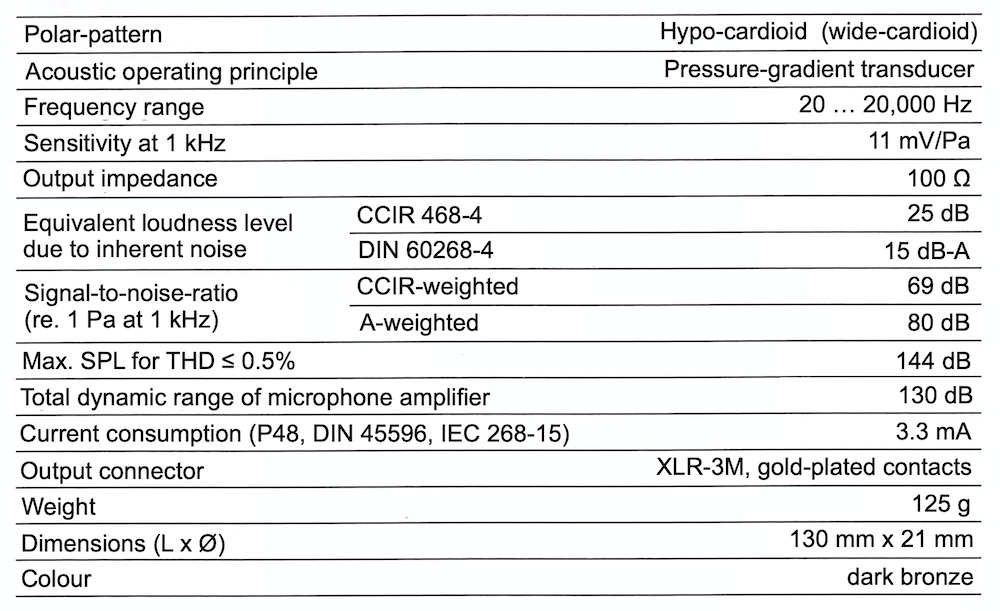
M 330 (wide-cardioid) frequency response & polar-patterns:
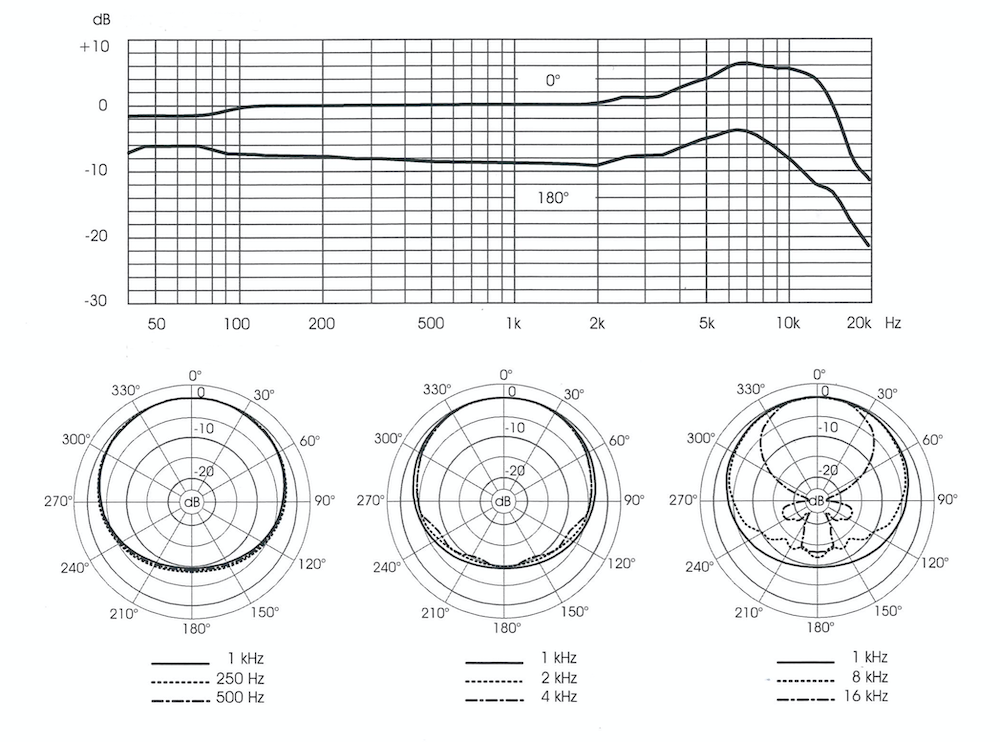
The M 300, M 310, M 320 and M 330 can also be used as a Boundary Microphone by using a “TURTLE” – for information on the TURTLE see HERE.
